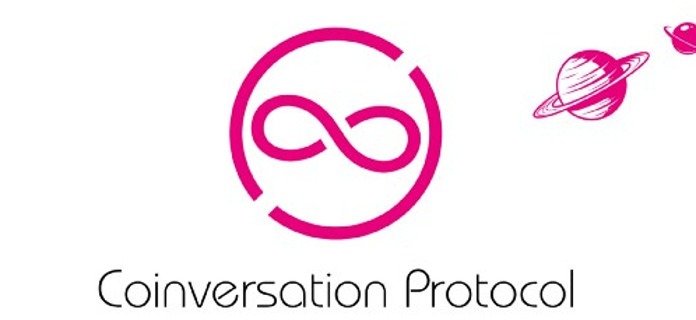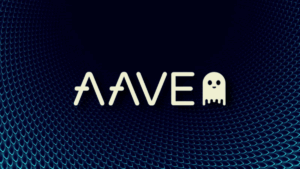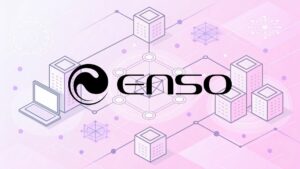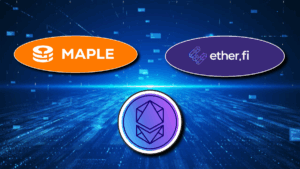Until recently, the Ethereum network was the champion of DeFi space. But its position is now being challenged by other blockchain networks. The Polkadot Network is one of them that is attracting many Ethereum projects like Coinversation.
Whether it is on Ethereum, Polkadot, Tezos, or any other blockchain, decentralized exchanges (DEXes) are the pillar of Decentralized Finance. DEX has made great strides in recent years and is now an integral part of the DeFi space. Decentralized Exchanges (DEX) have gained popularity since the hype of DeFi. DEXs successfully compete with CEXs and even major crypto exchanges like Coinbase are having trouble contesting decentralized liquidity protocols like Uniswap.
Decentralized exchanges have almost casually entered the crypto space in 2020 when crypto space was in jeopardy due to increased volatility. But the as DeFi market continued to grow rapidly, the cryptocurrency industry came out winner dring the COVID-19 induced economic shocks.
Thanks to DeFi, cryptocurrencies are now reaching mainstream adoption. Behind this $78 billion market, decentralized exchanges (DEXes) like Uniswap are the match-winner.
Synthetic assets is also another DeFi-enabled innovation that proved that DeFi can go much further than simple tokens swap, lending, and borrowing. A synthetic asset is simply a tokenized derivative that mimics the value of another asset. The synthetic asset has enabled us to think about a world where everything could be replaced in part by synthetic versions that trade on a global pool of liquidity with open and free access to anyone.
With Polkadot getting up the ranks and nearing its parachain mainnet launch, all kinds of projects are coming into the Polkadot ecosystem. Coinversation Protocol is one of the most-talked DeFi protocols that claims to be the first synthetic asset protocol on Polkadot and decentralized exchange (DEX). Let’s take a look at Coinversation Protocol.
What is Coinversation Protocol?

A blog post by the Coinversation Protocol describes it as a synthetic asset issuance protocol and decentralized contract trading exchange based on the Polkadot contract chain. With Coinversation Protocol, any stocks, bonds, gold, and any other off-chain assets can be issued as a synthetic asset.
The issuance of synthetic assets is done through smart contracts and the performance of the assets being synthesized can be tracked through oracles. As Crypto Economy reported, to bring oracle functionality, Coinversation Protocol has integrated Chainlink price feeds oracles via recently launched Substrate Oracle Pallet for accurate pricing data on all assets used within the protocol.
As a DEX, Coinversation is an Automated Market Maker (AMM)-based protocol that solves transaction depth and liquidity problems as no counterparty is needed to perform synthetic asset swaps.
Besides a synthetic issuance protocol and a DEX, the protocol also features a cUSD stablecoin always defined as $1, collateral pools, fee pools, and liquidity mining.
This means that the main functional modules of the entire system include: forging synthetic assets (MintC), DEX, collateral pools, fee pools, oracles, and liquidity mining.
What is Inside Coinversation Protocol?
According to the whitepaper, there are two main core products in Coinversation Protocol: Coinpro.MintC and Coinpro.Exchange.
- Coinpro.MintC is the minting center for minting and destroying cUSD, managing collateralization ratio, checking account balance, MintC historical ledger, and unlocking collaterals.
- Coinpro.Exchange is a decentralized exchange for trading synthetic assets. As it is an AMM-based exchange, no order book is required. The exchange features unlimited liquidity and point-to-point contract transaction, offering seamless transactions between various synthetic assets.
How to Mint Synthetic Asset?
The life cycle of synthetic assets can be divided into three stages: forging – trading – destruction.
On Coinversation Protocol, anyone can mint synthetic assets by using native CTO or DOT tokens as collateral on Coinpro.MintC. The mortgage ratio of CTO is 800%, and the mortgage ratio of DOT is 500%. That means CTO worth $800 or DOT worth $500 can mint for $100 cUSD. In the future, the collateral and collateralization ratio can be adjusted through community governance.
When users stake collaterals and forge synthetic assets, corresponding debts are generated. When the user wants to unlock the collateral, he must repay the debt, that is, destroy the previously generated synthetic assets.
When a user stake CTO or DOT tokens, they mint cUSD stablecoins. cUSD is a type of synthetic asset and the standard currency of the entire system. This cUSD can then be traded for other synthetic assets on Coinversation DEX.
According to Coinversation whitepaper, on DEX, through contract trading, cUSD can be converted into any synthetic assets supported by the system, such as cBTC, cETH, and even cAAPL, cXAU linked to traditional assets such as stocks and gold, and supports long or short.
The types of synthetic assets available on Coinversation DEX will be decided by the community governance. If the user simply holds cUSD after minting, it is equivalent to automatically shorting all other assets in the system.
Coinversation DEX
In Coinversation Protocol, Coinpro.Exchange is an exchange that provides conversion of different synthetic assets and contract trading. cUSD minted by collateralizing CTO or DOT tokens can be converted into other synthetic assets in Coinpro.Exchange, e.g. cryptocurrencies such as cBTC, cETH, and cDOT, foreign exchange such as the euro, yen, renminbi, and even gold and various stocks. All these assets are systematically synthesized, not real assets, and their conversion rate is determined by the external real price provided by the oracle such as Chainlink Price Feeds oracles.
Collateral or Debt Pool
The whitepaper describes collateral pools as:
“The collateral pool is the sum of synthetic assets generated by all users and is priced in cUSD. According to the amounts of synthetic assets generated by each user, the debt pool also records the proportion of each user’s debt. Whenever a new synthetic asset is generated, the debt ratio of the system must be recalculated.”
Coinversation Protocol states that the respective debt ratios of all users in the system are determined when staking the CTO or DOT to mint CUSD, and it has nothing to do with the price of other synthetic assets after conversion. But the changes in asset prices will change the debt amount, not the ratio. Through a constant debt ratio, the protocol calculates the profit of each user. When a user wants to exit the system and unlock the staked CTO or DOT, the debt must be repaid first. If a user mints $100 of cUSD through staking CTO, he needs to destroy $100 of cUSD to unlock the locked CTO.
Fee Pool
Users trading or converting synthetic assets on the DEX will incur transaction fees. The fee ratio is tentatively set at 0.3%, and all these fees enter the Fee Pool. The fee is collected in cUSD and distributed to users in proportion to the debt.
The Coinversation whitepaper reads:
“The system stipulates that only users whose collateral is the CTO can receive rewards, as an incentive for CTO holders. Because the CTO price fluctuates, it is stipulated that only users who meet the collateralization ratio are eligible to receive rewards.”
The fee pool distributes rewards to users who meet the specified collateralization ratio in the entire system every two weeks and the reward ratio is determined by the user’s debt ratio. New users need to hold debts for more than a certain number of days or accumulatively use them for more than a certain number of days to be eligible for the fee pool rewards.
Coinversation Protocol Token CTO
CTO is the native token of Coinversation Protocol with a hard cap of 100 million. 50 million will be issued when the project goes online and 50 million will be generated through liquidity mining.
There two main functions of the CTO token on the protocol. The first is to generate synthetic assets through staking CTO as collateral and earn trading fees. . The second is that CTO is also the governance token of CP. All protocol parameters including the increase or decrease of the types of collateral, the adjustment of the collateralization ratio, and the types of synthetic assets can be determined by voting by CTO holders.
Liquidity Mining
As we know, 50% of CTO will be generated by liquidity mining. The quantity produced is halved every 4 years. 25 million CTOs will be generated in the 1st to 4th years after the project launch, 12.5 million CTOs will be generated in the 5th to 8th years, and so on.
According to the whitepaper, the pledge of liquid mining is consistent with the collateral pool of synthetic assets. 75% of the CTO generated by liquid mining will be allocated to users who stake CTO, and 25% will be allocated to users who stake DOT. Currently, this ratio is decided by the team. In the future, this can be changed through community governance.
Liquidity mining is the module of issuing CTO tokens. But a user can not put all his CTO or DOT holding in liquidity mining. He must also put 20% of CTO or DOT tokens that he is going lock for liquidity mining, in the collateral pool to mint synthetic assets, to provide more liquidity for the entire system.
Important Links
Website: http://coinversation.io/
Whitepaper: https://github.com/Coinversation/white-paper
Twitter: https://twitter.com/Coinversation_
Coinversation Blog: https://medium.com/coinversation-protocol










